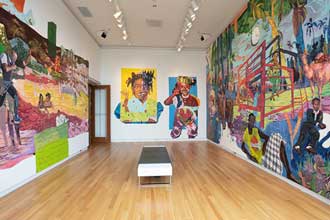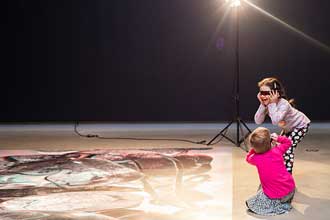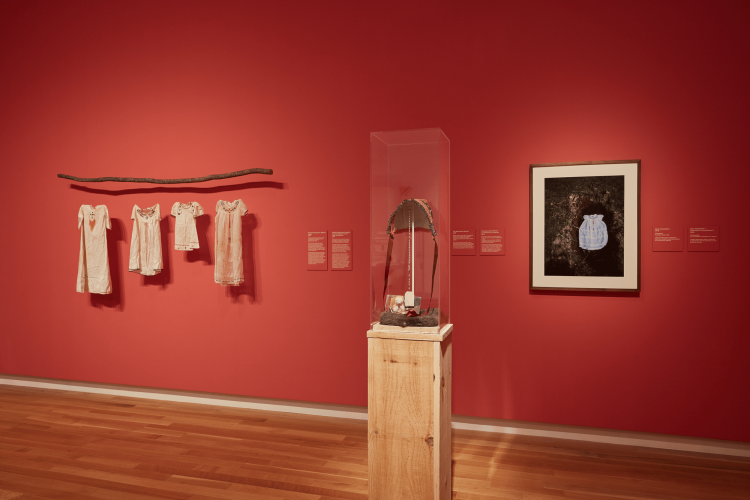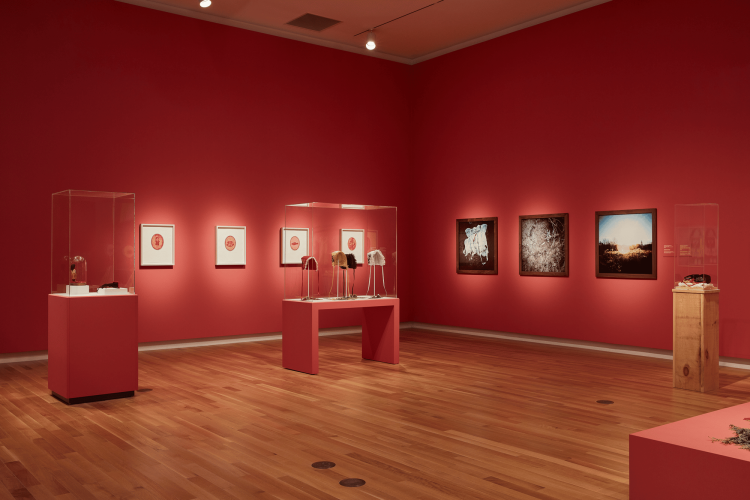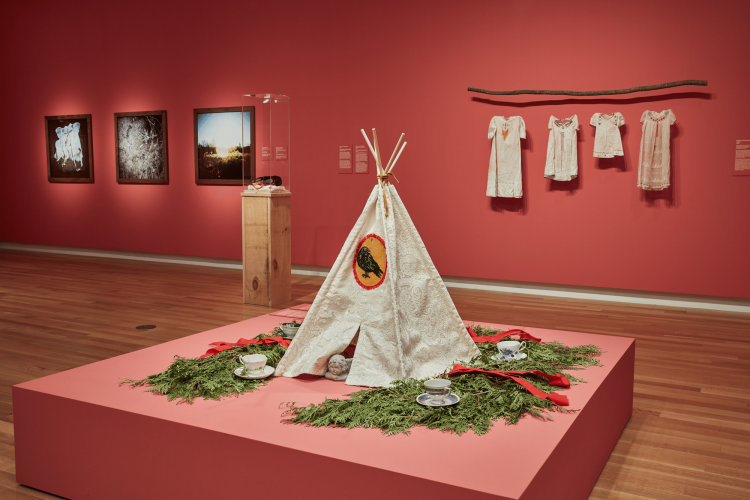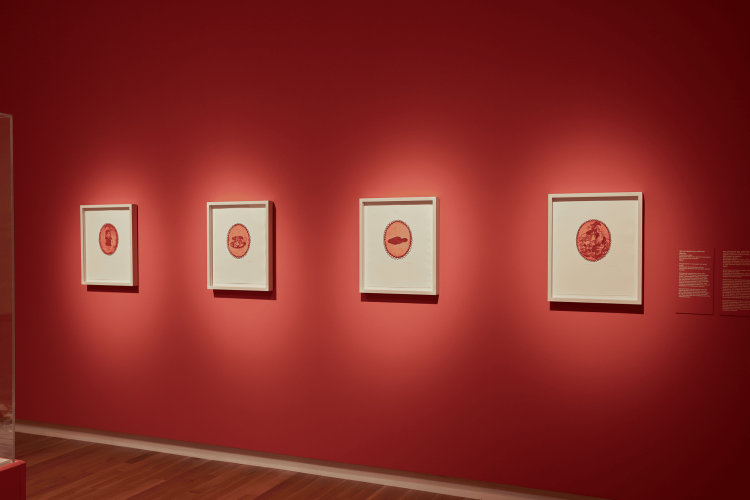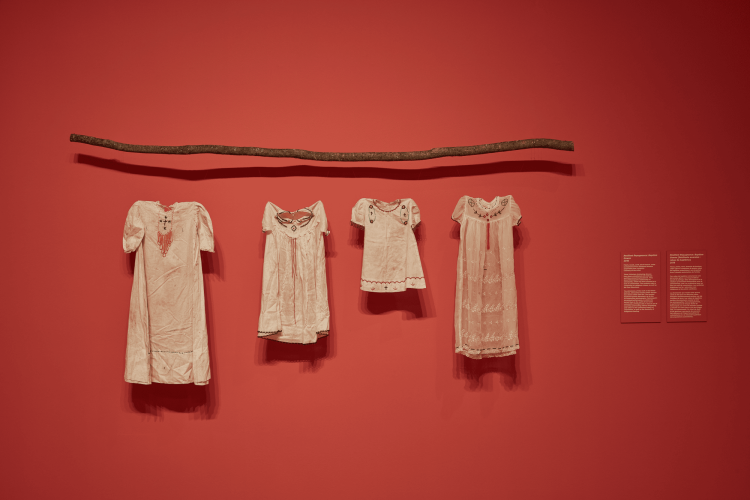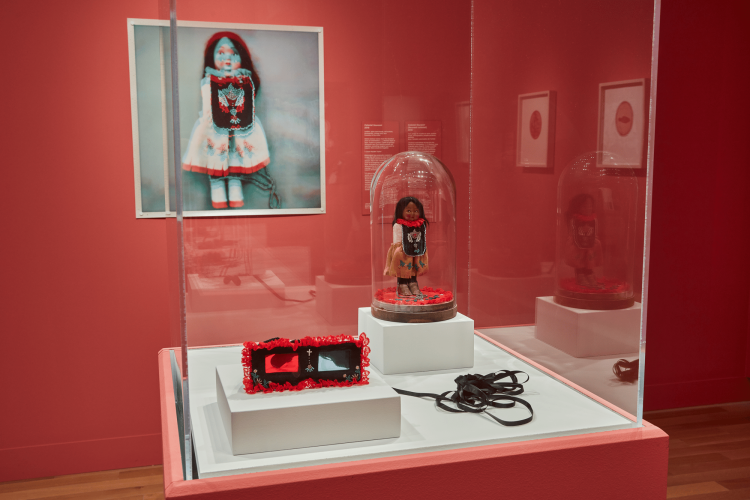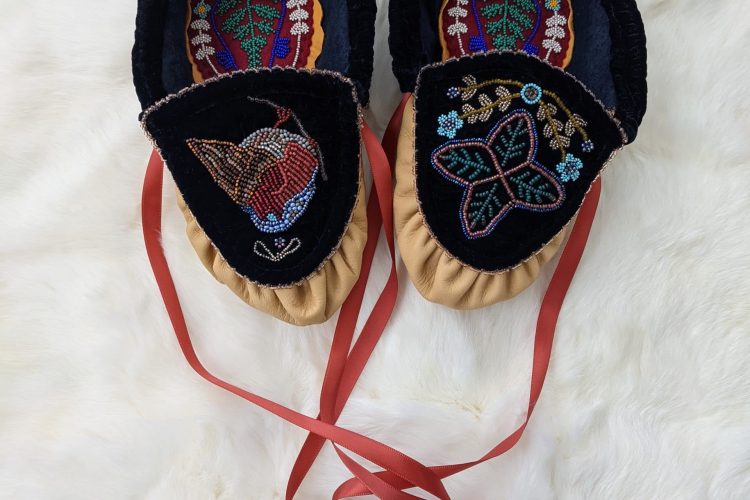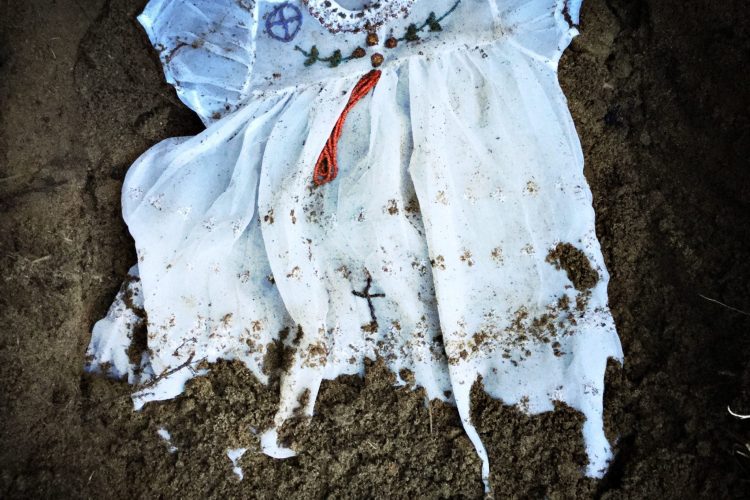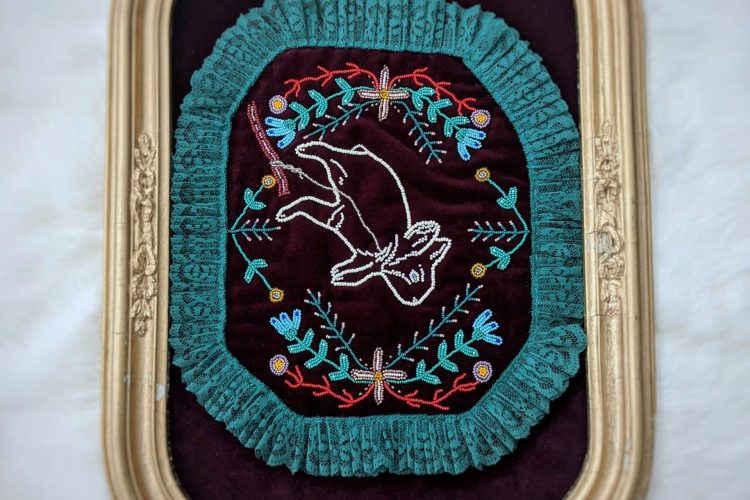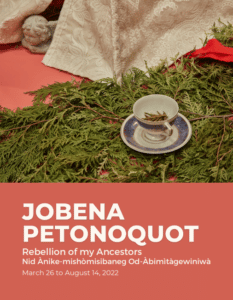Jobena Petonoquot
Rebellion of my Ancestors | Nid Ànike-mishòmisibaneg Od-Àbimìtàgewiniwà
March 26, 2022
- August 14, 2022
Curators: Rebecca Basciano, OAG; Lori Beavis, Guest Curator, Executive Director, Centre d’art daphne
Jobena Petonoquot brings together community, art history, colonization, religion and resilience, by carrying family histories and holistic and relational knowledge from her Anishinābe and Naskapi relations into her experiences and rigorous artistic practice. Petonoquot folds the past into the present through a blend of traditional and contemporary media, including beadwork, fibre art, installation, printmaking and photography.
Petonoquot presents the natural world as a place of healing, as well as ongoing colonialism. Floral beadwork emphasizes the cyclical patterns of nature, and moccasins push fallen branches back into the earth to nourish the soil. Through Victorian-era aesthetics, she pays tribute to the rebellion of her ancestors, who continued to hunt and trap on the land, even though it was prohibited by colonial powers. This self-sufficiency enabled the survival of Indigenous ways of knowing.
Petonoquot also takes a critical and sensitive look at the relationship between colonization and Christianity, where religion was used as a justification for genocide. To confront this, Petonoquot created a durational performance in which she buried beaded baptismal gowns in the earth of her home community of Kitigan Zibi, later unearthing them for exhibition, thereby performing a ritual of mourning and healing, without forgetting.
As a method of storytelling and memory-keeping, beading is a form of cultural resilience. Likewise, Petonoquot’s work takes a positive approach to encouraging people to talk, think about, and look further into the history and ongoing experiences of Indigenous peoples in Canada.
Sponsors/Partners:
This exhibition was realized with the support of the City of Ottawa, the Ontario Arts Council and the Canada Council for the Arts.
Jobena Petonoquot, Resilient Repugnance: Buried dress, 2018, photograph (part of a triptych), 76.2 x 76.2 cm. Courtesy of the Artist
Images
Tour the Exhibition
Play Video
Related Events
Additional Resources
Click here to read the exhibition brochure
Media Coverage:
Ka’nhehsí:io Deer. “Algonquin artist uses beadwork and found objects to explore stories of resilience.” CBC News, December 17, 2018. https://www.cbc.ca/news/indigenous/jobena-petonoquot-solo-exhibit-montreal-1.4949079?msclkid=0055a553a61a11ec999f43fe19ee6ad6.
Sylvia J. Dreaver. “Jobena Petonoquot: Artist Continues Family History of Rebellion.” Galleries West, June 13, 2022. https://www.gallerieswest.ca/magazine/stories/jobena-petonoquot/.
“Jobena Petonoquot.” Art Souterrain, 2022. https://www.festival2022.artsouterrain.com/en/artistes/petonoquot-jobena/.
“Jobena Petonoquot: Rebellion of my Ancestors.” Warren G. Flowers Art Gallery, Dawson College, September 19, 2019. https://www.dawsoncollege.qc.ca/art-gallery/exhibitions/jobena-petonoquot-rebellion-of-my-ancestors/?msclkid=005556c7a61a11ec953d908526e185a0.
Resources and Research:
Olivier Dezutter, Naomi Fontaine et Jean-François Létourneau, dirs. Tracer un chemin, Meshkanatsheu : écrits des Premiers Peuples. Wendake : Éditions Hannenorak, 2017. Free reference in The Living Room.
Gord Hill. The 500 Years of Indigenous Resistance Comic Book. Vancouver: Arsenal Pulp Press, 2021. Available for sale in the OAG Shop, and free reference in The Living Room.
Natasha Kanapé Fontaine. Blueberries and Apricots. Toronto: Mawenzi House Publishers Ltd., 2018.
Nyla Matuk, ed. Resisting Canada: An Anthology of New Poetry. Montreal: Véhicule Press, 2019. Free reference in The Living Room.
Drew Hayden Taylor, ed. Me Funny. Vancouver: Douglas & McIntyre, 2005.

